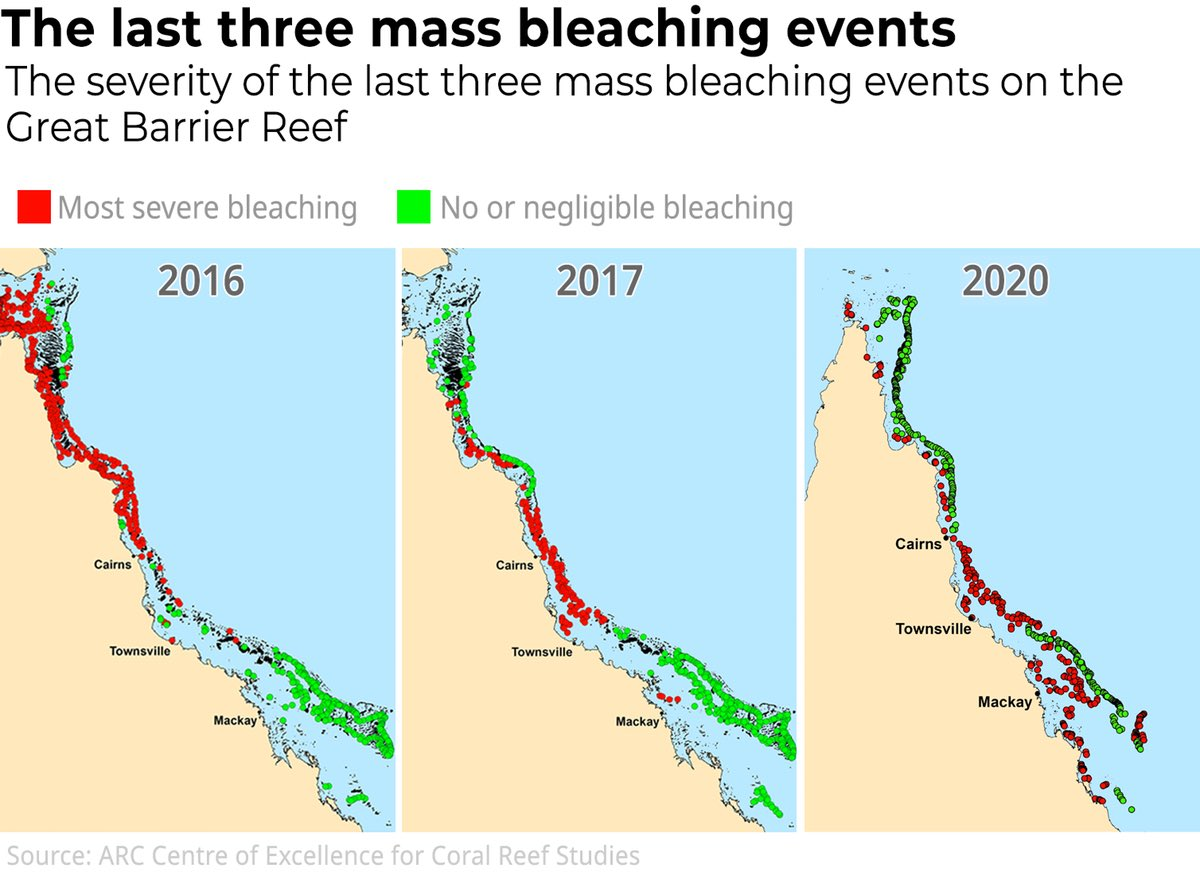Great Barrier Reef endures third mass bleaching in five years
One of the seven wonders of the natural world is suffering from back-to-back bleaching, with the third mass bleaching in five years.

One of the seven wonders of the natural world is suffering from back-to-back bleaching, with the third mass bleaching in five years.
The Great Barrier reef system covers over 2,300km (1,400 miles) and is a World Heritage site recognised for its "enormous scientific and intrinsic importance".
Scientists have detected widespread bleaching which includes extensive patches of severe damage. It is thought that extra warm sea temperatures at the beginning of this year, the highest sea temperatures ever recorded in February, largely contributed to the loss of huge areas of coral within the reef. But healthy pockets still remain in some areas.
Two-thirds of the reef were damaged in 2016 and 2017 by similar bleaching events thought to be the result of human-induced climate change.
Dr David Wachenfeld, Chief Scientist at the Great Barrier Reef Marine Park Authority, said: “My greatest fear is that people will lose hope for the reef. Without hope there’s no action.”
“People need to see these [bleaching] events not as depressing bits of news that adds to other depressing bits of news. They are clear signals the Great Barrier Reef is calling for urgent help and for us to do everything we can.”
The reefs were surveyed just before the pandemic of the coronavirus hit, with 11 flights in 9 days as well as underwater surveys that were taken to verify the scoring accuracy.
The maps below show the last three mass bleaching events from 2016, 2017 & 2020. The areas in green show reefs that managed to escape bleaching. The areas in red are reefs that are the most severely impacted, where 60% or more of the coral has been bleached.

Professor Terry Huges, director of the Centre of Excellence for Coral Reef Studies at James Cook University, told the Australian Academy of Science, that when levels of bleaching are that extensive, mortality rates are expected to be high. He also states that the speed of these mass bleaching events is surprising and we should expect to see more of these events in the future.
“The only way to secure a future for the world's coral reefs is to deal with greenhouse gas emissions. The scale of the bleaching is enormous during global bleaching events and there has now been three of them.”
“It’s not just a problem for Australia but for many, many countries. Many of whom depend, much more than Australia does, on the resources provided by a coral reef. Coral reefs are incredibly important for the food security and livelihoods of hundreds of millions of people, primarily in small, rapidly-developing, relatively poor countries.”
The UN has warned that if global temperatures continue to rise by 1.5C or above, the effect on the world's coral reef will be disastrous, 90% will be wiped out. This reinforces how important it is that all countries play their part in sticking to the goals and targets agreed within the Paris Agreement in order to keep global temperature rise at 1.5C.
To find out more about how you and your business can align your goals with the Paris Agreement & make real tangle commitments alongside world leaders from the public and private sector, register your interest here for the Sustainable Innovation Forum, the premium business-focused event, alongside the UNFCCC’s COP26.
